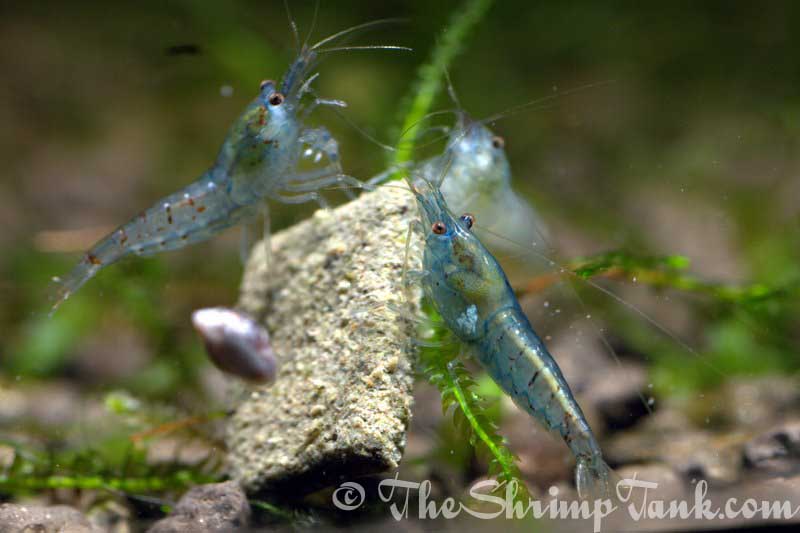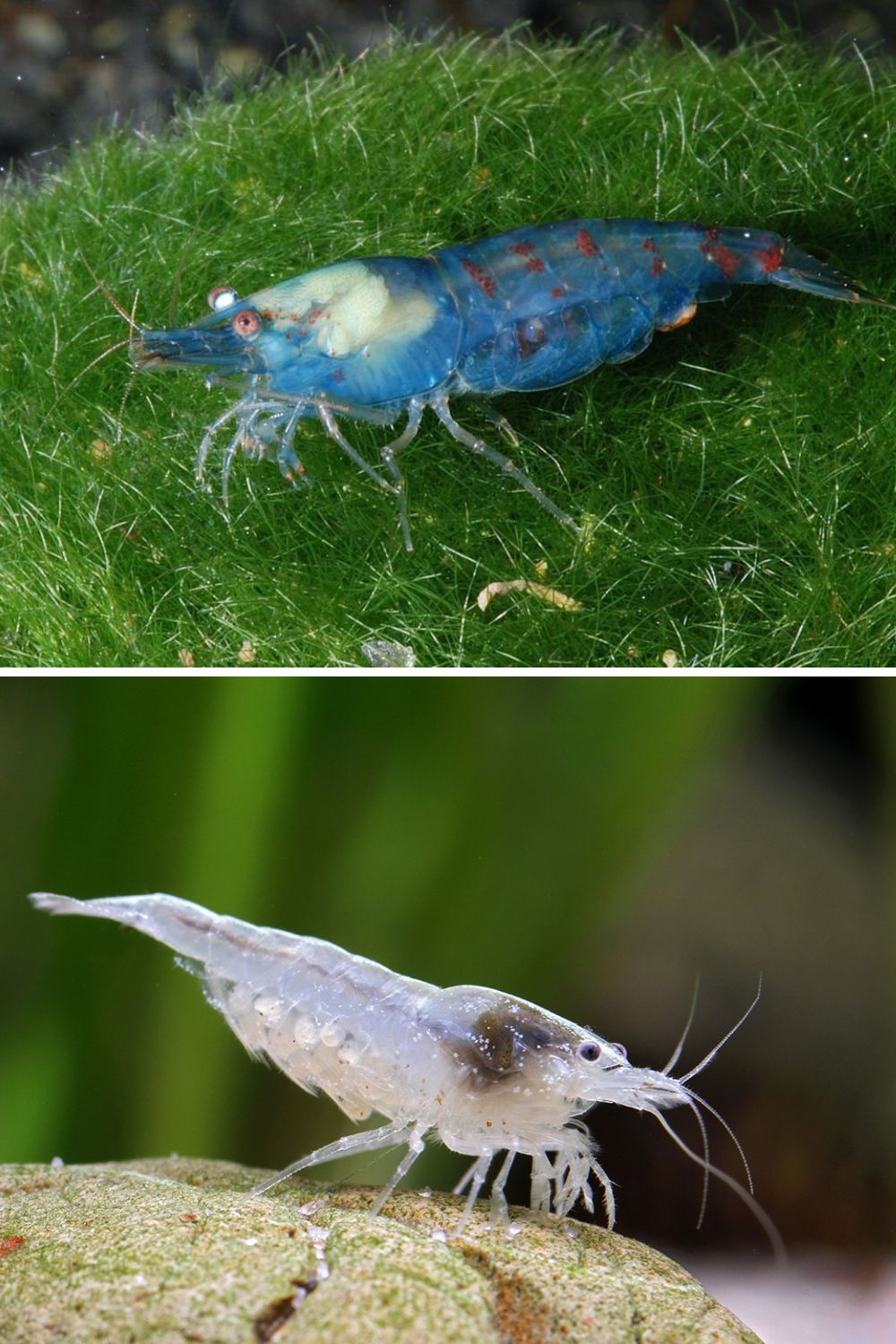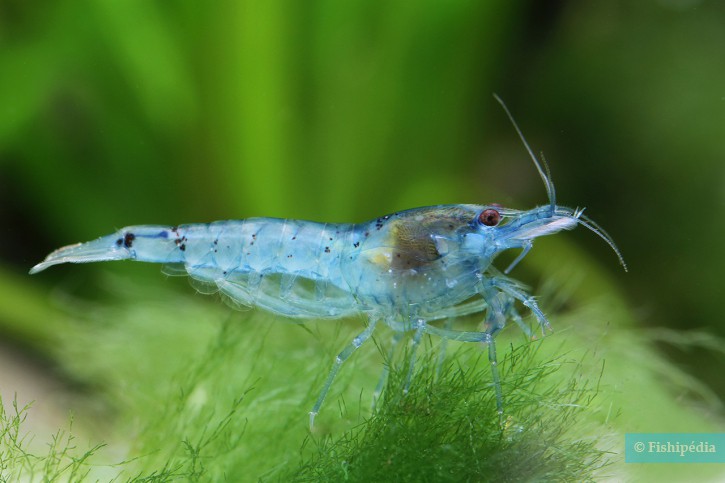Blue Pearl Shrimp can suffer from diseases like bacterial infections and parasitic infestations. Poor water quality often triggers these health issues.
Blue Pearl Shrimp are popular in aquariums due to their vibrant color and easy care. Maintaining their health is crucial for their longevity and well-being. Common health problems include bacterial infections, parasitic infestations, and issues related to poor water quality.
Regular water changes, proper filtration, and a balanced diet can help prevent these problems. Observing shrimp behavior and appearance can alert you to potential health issues early. Quarantine new shrimp to avoid introducing diseases to your tank. Healthy shrimp display vibrant colors and active behavior, while sick shrimp may show lethargy and discoloration. Proper care ensures a thriving shrimp population.
Common Health Issues
Blue Pearl Shrimp are popular in aquariums for their vibrant color and active nature. However, like any living creature, they can face various health problems. Knowing the common health issues can help you keep your shrimp healthy and thriving.
Parasites
Parasites are a common problem for Blue Pearl Shrimp. These tiny invaders can cause significant stress and health decline. Common parasites include:
- Vorticella: Appears as white fuzz on the shrimp’s body.
- Scutariella Japonica: Looks like small white worms near the shrimp’s head.
Regularly check your shrimp for these signs. Early detection and treatment are crucial.
Bacterial Infections
Bacterial infections can be deadly if left untreated. These infections often present with visible symptoms. Look for the following signs:
- Red or inflamed spots on the shrimp’s body.
- Lethargy and lack of appetite.
Isolate infected shrimp immediately. Use antibacterial treatments designed for shrimp.
Fungal Infections
Fungal infections are less common but still pose a threat. These infections often appear as:
- White or gray patches on the shrimp’s body.
- Fuzzy growths on the legs or antennae.
Maintain good water quality to prevent fungal infections. Use antifungal treatments if necessary.
| Health Issue | Common Signs | Treatment |
|---|---|---|
| Parasites | White fuzz or worms | Check and treat early |
| Bacterial Infections | Red spots, lethargy | Isolate and treat |
| Fungal Infections | White/gray patches | Maintain water quality |

Credit: www.theshrimptank.com
Symptoms To Watch For
Blue Pearl Shrimp are delicate creatures. Keeping them healthy is crucial for their survival. Recognizing early symptoms of health problems can save their lives. Below are key symptoms to watch for in Blue Pearl Shrimp.
Color Changes
A healthy Blue Pearl Shrimp should have a vibrant blue color. If you notice any change in their color, it’s a red flag. Common color changes include:
- Fading Blue: This could indicate stress or poor water quality.
- Yellowish Tint: May suggest a bacterial infection.
- Black Spots: Often a sign of fungal infections.
Regularly check your shrimp’s color to spot issues early.
Lethargy
Active shrimp are healthy shrimp. Lethargy is a common symptom of health problems. Watch for these signs:
- Reduced Movement: Shrimp staying in one spot for long periods.
- Slow Responses: Delayed reaction to food or stimuli.
- Floating: Shrimp floating at the water surface without moving.
If your shrimp appear lethargic, check the water parameters immediately.
Unusual Behavior
Behavioral changes can be early indicators of health issues. Keep an eye out for:
- Erratic Swimming: Shrimp swimming in circles or darting around.
- Climbing Out: Shrimp trying to escape the tank.
- Hiding: Shrimp staying hidden for unusually long periods.
Monitor their behavior closely to catch problems early.
Preventive Measures
Keeping Blue Pearl Shrimp healthy requires simple but essential preventive measures. Healthy shrimp are happy shrimp. Follow these steps to ensure their well-being.
Water Quality
Maintaining excellent water quality is crucial for Blue Pearl Shrimp. Clean water helps them thrive.
- Test the water regularly.
- Keep pH levels between 6.5 and 8.0.
- Ensure ammonia and nitrite levels are zero.
- Perform weekly water changes.
Use a good filter to keep the water clean. Proper filtration removes toxins and waste.
Proper Diet
A balanced diet is vital for shrimp health. Feed them right to avoid health issues.
| Food Type | Frequency |
|---|---|
| Algae | Daily |
| Vegetables | Once a week |
| Commercial Shrimp Food | Every other day |
Do not overfeed. Remove uneaten food to prevent water quality issues.
Quarantine New Shrimp
Always quarantine new shrimp before adding them to your tank. This step prevents diseases from spreading.
- Set up a separate quarantine tank.
- Keep new shrimp in quarantine for 2 weeks.
- Monitor them for any signs of illness.
If new shrimp show symptoms, treat them before introducing them to the main tank. This keeps your existing shrimp safe.

Credit: www.theshrimpfarm.com
Treating Health Problems
Blue Pearl Shrimp are delicate creatures. They need special care to stay healthy. If your shrimp fall ill, treating health problems quickly is vital. Here are some effective ways to treat their health issues.
Medications
Sometimes, shrimp need medications to heal. Antibiotics can treat bacterial infections. Antifungals are used for fungal diseases. Always use medications designed for shrimp. Avoid copper-based treatments. Copper is toxic to shrimp.
| Medication Type | Usage |
|---|---|
| Antibiotics | Treat bacterial infections |
| Antifungals | Treat fungal diseases |
Natural Remedies
Natural remedies can be safer for shrimp. Indian Almond Leaves release tannins. These tannins have healing properties. Catappa leaves can also help with stress. Aloe Vera is another natural remedy. It can boost shrimp immunity.
- Indian Almond Leaves – Release healing tannins
- Catappa Leaves – Reduce stress
- Aloe Vera – Boost immunity
Isolation Techniques
Isolation can prevent the spread of diseases. Set up a quarantine tank for sick shrimp. This helps in monitoring them closely. Ensure the tank has the same water parameters. This reduces stress on the sick shrimp. Use a gentle filter in the quarantine tank. This helps maintain water quality.
- Set up a quarantine tank.
- Match water parameters.
- Use a gentle filter.
Importance Of Tank Maintenance
Blue Pearl Shrimp are delicate creatures. Their health depends on a clean tank. Tank maintenance is crucial for their well-being. Poor maintenance leads to health problems. Regular care ensures a healthy environment.
Regular Cleaning
Regular cleaning keeps the tank free from waste. Clean the tank every week. Remove uneaten food and debris. This prevents harmful bacteria buildup. Use a gravel vacuum to clean the substrate. Avoid harsh chemicals during cleaning.
Water Testing
Water quality is vital for shrimp health. Test the water weekly. Check pH, ammonia, nitrite, and nitrate levels. Keep pH between 6.5 and 8.0. Ammonia and nitrite levels should be zero. Nitrate levels should be below 20 ppm.
| Parameter | Ideal Range |
|---|---|
| pH | 6.5 – 8.0 |
| Ammonia | 0 ppm |
| Nitrite | 0 ppm |
| Nitrate | < 20 ppm |
Filter Maintenance
The filter keeps the water clean. Clean the filter every month. Replace filter media as needed. A clogged filter reduces water flow. This affects water quality. Follow the manufacturer’s instructions for filter care.
- Clean the tank weekly.
- Test water parameters weekly.
- Maintain the filter monthly.
These steps ensure a healthy tank. Healthy tanks lead to healthy shrimp.
Feeding And Nutrition
Proper feeding and nutrition are vital for the health of Blue Pearl Shrimp. A balanced diet ensures they thrive and stay vibrant. This section explores balanced diets, supplemental foods, and feeding schedules.
Balanced Diet
A balanced diet is crucial for Blue Pearl Shrimp. They need various nutrients to stay healthy. Their diet should include:
- High-quality shrimp pellets
- Algae wafers
- Vegetable matter
These foods provide essential vitamins and minerals. They also support growth and color development.
Supplemental Foods
Supplemental foods add variety and additional nutrients to their diet. Some excellent options include:
- Blanched vegetables (like spinach and zucchini)
- Protein sources (such as bloodworms and brine shrimp)
- Calcium supplements (for exoskeleton health)
These foods should be given in moderation. They should complement the main diet.
Feeding Schedules
Feeding schedules help maintain shrimp health. Overfeeding can lead to water quality issues. Here’s a simple feeding schedule:
| Day | Food Type | Amount |
|---|---|---|
| Monday | Shrimp pellets | Small pinch |
| Tuesday | Algae wafer | Half wafer |
| Wednesday | Blanched vegetables | Small piece |
| Thursday | Shrimp pellets | Small pinch |
| Friday | Protein food | Small piece |
| Saturday | Shrimp pellets | Small pinch |
| Sunday | Algae wafer | Half wafer |
Following a schedule prevents overfeeding. It also keeps the tank clean and healthy.
Stress Reduction
Keeping your Blue Pearl Shrimp stress-free is vital for their health. Stress can lead to various health problems. Understanding how to reduce stress will help your shrimp thrive.
Ideal Tank Mates
Choose tank mates that are peaceful. Aggressive fish can stress your Blue Pearl Shrimp. Consider these ideal tank mates:
- Neon Tetras
- Cherry Shrimp
- Snails
These species are known to coexist peacefully with Blue Pearl Shrimp. Avoid large or predatory fish like Cichlids or Bettas.
Hiding Spots
Provide plenty of hiding spots in the tank. Hiding spots offer a safe refuge for stressed shrimp. Use plants, rocks, and decor to create hiding spots.
| Hiding Spot | Description |
|---|---|
| Plants | Live plants like Java Moss are excellent hiding places. |
| Rocks | Arrange rocks to form small caves and crevices. |
| Decor | Use shrimp tubes and other aquarium decor. |
Ensure these hiding spots are safe and free of sharp edges.
Stable Environment
Maintain a stable environment to reduce stress. Sudden changes in water parameters can stress shrimp. Keep the water temperature and pH levels consistent.
- Temperature: 72-78°F (22-25°C)
- pH Level: 6.5-7.5
- Ammonia: 0 ppm
- Nitrite: 0 ppm
- Nitrate: <20 ppm
Use a reliable heater and thermometer. Regularly check water parameters with test kits. Perform regular water changes to keep the tank clean.
Following these tips will help keep your Blue Pearl Shrimp stress-free and healthy.
Monitoring And Regular Checkups
Monitoring and regular checkups are crucial for maintaining the health of your Blue Pearl Shrimp. These practices help in early detection of diseases and ensure your shrimp thrive. Regular monitoring involves routine observations, behavior tracking, and maintaining health logs. Let’s dive deeper into these aspects.
Routine Observations
Routine observations are essential for spotting early signs of health issues. Check for any changes in color, size, or activity levels. Healthy Blue Pearl Shrimp should have a vibrant blue color and be active.
- Color Changes: Fading or darkening may indicate stress or illness.
- Activity Levels: Less movement can be a sign of poor health.
- Physical Appearance: Look for any visible injuries or abnormalities.
Conduct these checks daily to ensure your shrimp are in good health.
Behavior Tracking
Behavior tracking is another important aspect of monitoring shrimp health. Observe how they interact with their environment and each other. Healthy shrimp should be curious and active.
- Feeding Habits: Notice any changes in their eating patterns.
- Social Interaction: Healthy shrimp will engage with their tank mates.
- Hiding Behavior: Excessive hiding may signal a problem.
Keep a close eye on these behaviors to catch any issues early.
Health Logs
Maintaining health logs can help track the well-being of your shrimp over time. Record any observations, behaviors, and physical changes regularly. This practice helps identify patterns and potential health problems.
Use a simple table to log your observations:
| Date | Observation | Behavior | Notes |
|---|---|---|---|
| 01/10/2023 | Color fading | Less active | Possible stress |
| 01/11/2023 | Normal color | Active | Healthy |
Regularly updating your health logs will provide valuable insights.

Credit: www.fishi-pedia.com
Frequently Asked Questions
Are Blue Shrimp Good To Eat?
Yes, blue shrimp are good to eat. They are nutritious, tasty, and commonly used in various seafood dishes.
How Can You Tell If Shrimp Are Sick?
Sick shrimp show signs like lethargy, loss of appetite, color changes, or unusual swimming patterns. Check for visible parasites.
What Is The Milk Disease In Shrimp?
Milk disease in shrimp, also known as White Muscle Disease, causes the shrimp’s muscles to turn white and opaque. This disease results from viral infections, poor water quality, or nutritional deficiencies. It leads to reduced growth and high mortality rates, impacting shrimp farming productivity.
Proper management and biosecurity measures can help prevent it.
Are Blue Dream Shrimp Hard To Care For?
Blue Dream shrimp are easy to care for. They thrive in stable, clean water conditions. Regular maintenance ensures their health.
Conclusion
Maintaining Blue Pearl Shrimp health requires attention to water quality, diet, and tank conditions. Regular monitoring can prevent common health issues. By following these guidelines, your shrimp will thrive. Keep learning and adapting to ensure their well-being. Your efforts will lead to a vibrant and healthy shrimp colony.
